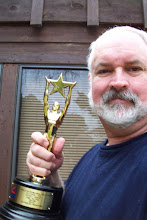 |
| I think I could rock this look! |
I know most black people find this appropriation business stupid – at least black people I know do. I think sharing each other's culture is a kind of compliment. How do people get theft out of somebody imitating their favorite things. Imitation, they say is the sincerest form of flattery.
In fact, this kind of phony outrage is mostly encouraged by university professors and so-called diversity advocates – most of whom are guilt-ridden white liberals.
Okay, let’s say, for the sake of argument, that my corn
rows would be an “appropriation” of black culture. So tell you what. I’ll deny
myself a head full of corn rows. This is a sacrifice for me. It’s taken a while
to grow my hair out long enough to do proper corn rows, so it’s a real wrench
for me to give up on my corn row dreams. But hey, I wouldn’t want to take what’s not mine.
That said, (and you knew
this was coming), I’d like you guys with
the corn rows to give back us honkies
something that belongs to us.
RAP MUSIC
RAP MUSIC
You see rap music is identical to a loosely structured dipodic rhyme form known as Skeltonic or Tumbling
Verse. This form of verse has the
following form according to the website Poet’s Collective.
- Any number of lines without a Stanza break
- Each line consist of two heavy stresses and any number of unstressed syllables
- Lines are mono-rhymed until the poet decides to begin a new rhyme.
- The poem should have energy and be fun.
Skeltonic
Verse was invented by English honky poet John Skelton (1460-1529). Skelton was
a colorful character. He was a teacher of Prince Henry, later King Henry the
Eighth (the original party king). Leading the way for modern rappers, Skelton
spent some time in the hoosegow. He was
also banned by the Church as a corrupter of youth.
Like rap music, Skeltonic
verse has two stresses per line and any number of unstressed syllables. Every
line is rhymed with the line before it – unless the poet decides to change the
rhymed last word. So sometimes you’ll get 2 lines that rhyme with each other
and then two more with a different rhyme. The rhymes could be repeated three or
four or ten times – however many the poet decides he wants to repeat the rhyme. The rhyme pretty
much goes on till the rhyme runs out of “energy”.
Given that Skeltonic verse was invented in the 15th
century in England, I think it’s fair to say that the rap rhyme scheme was
appropriated from ancient Caucasian culture – at any rate, we had it first.
In exchange for my foregoing corn rows, I demand that you forego appropriating
our white rhyme schemes.
As John Skelton would say,
If you play it loose
The sauce for the goose
Is sauce for the deuce
The goose and gander
Don’t mean to pander
Don’t get up your dander.
I want you to know
The same is so
Wherever you go
I don’t know
You can puff and blow.
But your cultural practice
The simple fact is
That history backed this
That the things we like
In front or back of the mike
Every recreation
Came from some other nation











No comments:
Post a Comment